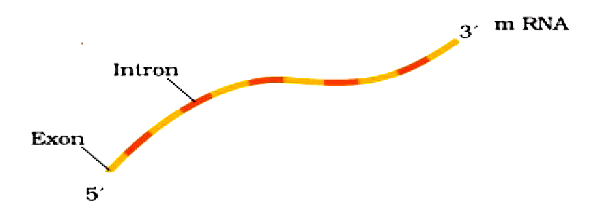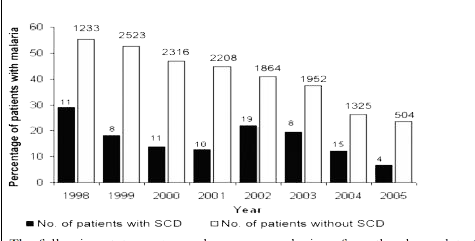Observe the segment of mRNA given below.

Gene encoding RNA Polymerase I and III have been affected by mutation in a cell. Explain its impact on the synthesis of polypeptide, stating reasons.
Step by step video & image solution for Observe the segment of mRNA given below. Gene encoding RNA Polymerase I and III have been affected by mutation in a cell. Explain its impact on the synthesis of polypeptide, stating reasons. by Biology experts to help you in doubts & scoring excellent marks in Class 12 exams.
Topper's Solved these Questions
- BOOK - CBSE MODEL PAPERCHAPTER - SAMPLE PAPER 2023 TERM IEXERCISE - SECTION - D8videos
SAMPLE PAPER 2023 TERM I
- BOOK - CBSE MODEL PAPERCHAPTER - SAMPLE PAPER 2022 TERM IIEXERCISE - SECTION C2videos
SAMPLE PAPER 2022 TERM II
- BOOK - CBSE MODEL PAPERCHAPTER - SAMPLE QUESTION PAPER (BIOLOGY)EXERCISE - SECTION-D6videos
SAMPLE QUESTION PAPER (BIOLOGY)
Similar Questions
Mutation in a gene which codes for RNA polymerase III makes it non functional which further affects the synthesis of
View SolutionIn this question below is given a statement followed by three assumption numbered I II and III. you have to considered the statement and the following assumptions decide which of the assumptions is implicit in the statement and choose your answer accordingly.
Statement: In Spite of the heavy rains the traffic has not been disrupted this year.
Assumption I. The traffic disrupted in rainy seasons only.
II. Rains do not affect traffic movement.
III. Adequate precautions were taken traffic management during rainy seasons.
(a)Only I is implicit.
(b)Only I and II are implicit.
[c]Only III is implicit
(d) Only II and III are implicit.
(e) None is implicitView Solution
Knowledge Check
- Question 1 - Select One
Transcription
I. IS the coping of a complementary mRNA on a DNA strand
II. Requires a template, activated precursors, a divalent metal ion and RNA polymerase
III. Is the first step in activation of amino acid
IV. Directs the order of specific amino acids to form a polypeptide or proteinAI and IIBIII and IVCI and IIIDII and IV - Question 2 - Select One
Consider the statements
(i) rRNA provides template for synthesis of proteins
(ii) tRNA brings amino acids and reads genetic code
(iii) RNA polymerase binds to promoter and initiates transcription
(iv) A segment of DNA coding for polypeptide is called intronAi and iii are correctBi,ii and iii are correctCi and ii are correctDii and iii are correct - Question 3 - Select One
Sickle cell anemia is a genetic disorder where the body produces an abnormal hemoglobin called hemoglobin S. Red blood cells are normally flexible and round, but when the hemoglobin is defective, blood cells take on a “sickle” or crescent shape. Sickle cell anemia is caused by mutations in a gene called HBB. It is an inherited blood disorder that occurs if both the maternal and paternal copies of the HBB gene are defective. In other words, if an individual receives just one copy of the defective HBB gene, either from mother or father, then the individual has no sickle cell anemia but has what is called “sickle cell trait”. People with sickle cell trait usually do not have any symptoms or problems but they can pass the mutated gene onto their children. There are three inheritance scenarios that can lead to a child having sickle cell anemia:
- Both parents have sickle cell trait
- One parent has sickle cell anemia and the other has sickle cell trait
- Both parents have sickle cell anemia

The following statements are drawn as conclusions from the above data (Kenya).
I. Patients with SCD (Sickle Cell Disease) are less likely to be infected with malaria.
II. Patients with SCD (Sickle Cell Disease) are more likely to be infected with malaria.
III. Over the years the percentage of people infected with malaria has been decreasing.
IV. Year 2000 saw the largest percentage difference between malaria patients with and without SCD.
Choose from below the correct alternative.Aonly I is trueBonly I is trueCIII and II are trueDI and III are true
In this question below is given a statement followed by three assumption numbered I II and III. you have to considered the statement and the following assumptions decide which of the assumptions is implicit in the statement and choose your answer accordingly.
Statement: "Several labour and industrial courts in this state have no proper premises. Vacancies of judges and stenos are kept pending ". -A statement of a retired judge of state X.
Assumption I. Adequate number of staff and judges helps in the smooth functioning of the industrial and labour courts.
II. The state is not bothered about the condition of the labour and industrial courts.
III. Physical facilities of an office help in increasing efficiency of its employees.
(a) Only I and III are implicit.
(b) Only II is implicit.
[c] Only II and III are implicit.
(d) All I , II and III are implicit.
(e) NOne of theseView SolutionIn this question below is given a statement followed by three assumption numbered I II and III. you have to considered the statement and the following assumptions decide which of the assumptions is implicit in the statement and choose your answer accordingly.
Statement: Wars must be discouraged vehemently even though majority of the victims might have been a nuisance to peace loving people.
Assumption I. Wars kill majority of wicked people.
II. Innocent people are also killed in wars.
III. Vehement opposition to wars may have some desirable impact.
(a) Only I and II are implicit.
(b) Only III is implicit.
[c] Only III and either I or II are implicit.
(d) All are implicit
(e) None of theseView SolutionIn this question below is given a statement followed by three assumption numbered I II and III. you have to considered the statement and the following assumptions decide which of the assumptions is implicit in the statement and choose your answer accordingly.
Statement: The central government has directed the states government to reduce government expenditure in view of the serious resource crunch and it may not be able to sanction any additional grant to the states for the next six months.
Assumption I. The state Governments are totally dependant on central government for its expenditures.
II. The central Government has reviewed the expenditure account of the State government.
III. The state Government will abide by the directive.
(a) None is implicit.
(b) Only II and III are implicit.
[c] Only III is implicit.
(d) All are implicit
(e) None of theseView SolutionIn this question below is given a statement followed by three assumption numbered I II and III. you have to considered the statement and the following assumptions decide which of the assumptions is implicit in the statement and choose your answer accordingly.
Statement: The state Government has unilaterally increased by five percent octroi on all commodities entering into the state without seeking approval of the Central Government.
Assumption I. The state government may be able to implement its decision .
II. The Central government may agree to support the state government's decision.
III. The state government may be able to earn considerable amount through the additional octroi.
(a) None is implicit.
(b) Only I and II are implicit
[c] All are implicit.
(d) Only II and III are implicit.
(e) None of theseView SolutionIn this question below is given a statement followed by three assumption numbered I II and III. you have to considered the statement and the following assumptions decide which of the assumptions is implicit in the statement and choose your answer accordingly.
Statement: A state government suspended two additional district judges .
Assumption I. They were negligent in discharging duties.
II. There was a charge of misconduct against them .
III. The government officials were biased against them.
(a) None is implicit.
(b) Either I or II is implicit.
[c] Any one of three is implicit.
(d) Only I and III are implicit.
(e) Either I or III is implicit.View Solution
